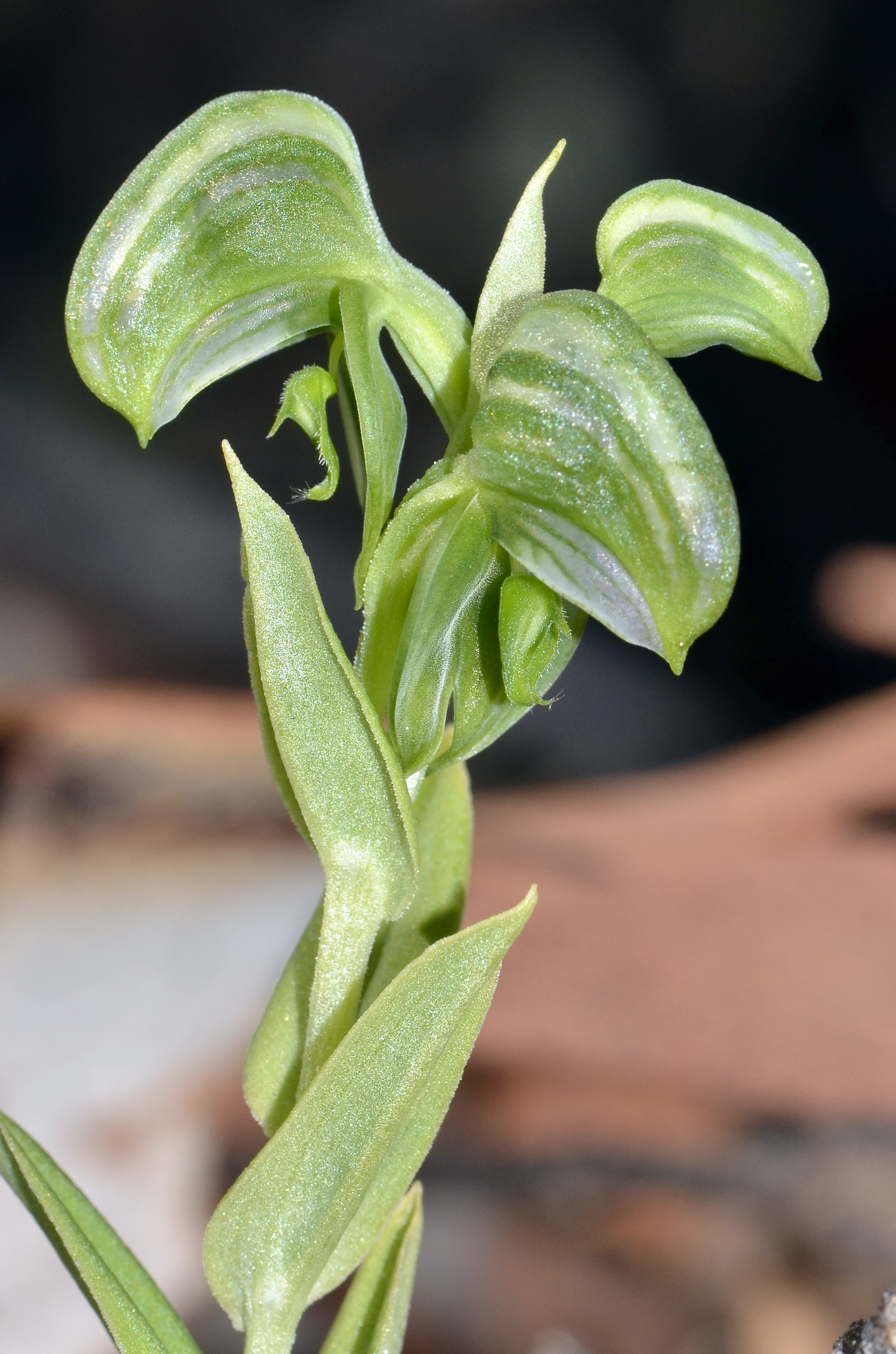Pterostylis Sanguinea on:
[Wikipedia]
[Google]
[Amazon]
''Pterostylis sanguinea'', commonly known as the red-banded greenhood or dark-banded greenhood, is a plant in the orchid family Orchidaceae and is endemic to southern 
Australia
Australia, officially the Commonwealth of Australia, is a Sovereign state, sovereign country comprising the mainland of the Australia (continent), Australian continent, the island of Tasmania, and numerous List of islands of Australia, sma ...
. The plants either have a rosette of leaves in the years when not flowering or stem leaves on a flowering spike. When flowering, it has up to about twelve flowers which are dark reddish-brown, sometimes green or green and brown with the dorsal sepal and petal
Petals are modified Leaf, leaves that surround the reproductive parts of flowers. They are often advertising coloration, brightly colored or unusually shaped to attract pollinators. All of the petals of a flower are collectively known as the ''c ...
s joined, forming a hood over the column
A column or pillar in architecture and structural engineering is a structural element that transmits, through compression, the weight of the structure above to other structural elements below. In other words, a column is a compression member. ...
. It is a common and widespread orchid, found in Western Australia, South Australia, Victoria and, rarely, in Tasmania. 
Description
''Pterostylis sanguinea'', is a terrestrial, perennial, deciduous,herb
In general use, herbs are a widely distributed and widespread group of plants, excluding vegetables and other plants consumed for macronutrients, with savory or aromatic properties that are used for flavoring and garnishing food, for medicinal ...
with an underground tuber. Non-flowering plants have a rosette of between three and ten, linear to lance-shaped leaves, each leaf long and wide, the leaves on a stem long. When flowering, there are twelve or more dark reddish-brown, green or green and brown flowers borne on a flowering spike high. The flowering spike has between six and ten stem leaves which are long and wide. The flowers are long, wide. The dorsal sepal and petals form a hood over the column. The lateral sepals turn downwards, are long, wide and joined for most of their length. The labellum is dark brown, hairy and insect-like, about long, wide and flicks upwards when touched. Flowering occurs from June to September.
Taxonomy and naming
''Pterostylis sanguinea'' was first formally described in 1989 by Mark Clements and the description was published in ''Australian Orchid Research'' from a specimen collected in Belair Recreation Reserve (nowBelair National Park
Belair National Park (formerly known as the National Park and as Belair Recreation Park) is a protected area in Belair, South Australia, southeast of Adelaide city centre; it covers an area of . It was proclaimed in 1891 and was the first nation ...
) in South Australia. The specific epithet
In taxonomy, binomial nomenclature ("two-term naming system"), also called nomenclature ("two-name naming system") or binary nomenclature, is a formal system of naming species of living things by giving each a name composed of two parts, bot ...
(''sanguinea'') is a Latin word meaning "bloody" or "blood-red" referring to the sometimes blood red colour of the flowers of this species.
Distribution and habitat
''Pterostylis sanguinea'' occurs in Western Australia from north of Kalbarri in the north to Toolinna Cove in the east, in the south-east of South Australia and in disjunct areas of Victoria, west from Yarram. In Tasmania it is only found in the Strzelecki National Park on Flinders Island. It grows in forest and woodland in well-drained soils.Conservation
''Pterostylis sanguinea'' is classified as "not threatened" by the Government of Western AustraliaDepartment of Parks and Wildlife
The Department of Parks and Wildlife (DPaW) was the department of the Government of Western Australia responsible for managing lands described in the ''Conservation and Land Management Act 1984'' and implementing the state's conservation and e ...
. In Tasmania it is classed as "rare" under the '' Threatened Species Protection Act 1995''.
References
{{Taxonbar, from=Q15492644, from2=Q52084203 sanguinea Endemic orchids of Australia Orchids of South Australia Orchids of Tasmania Orchids of Victoria (Australia) Orchids of Western Australia Plants described in 1989